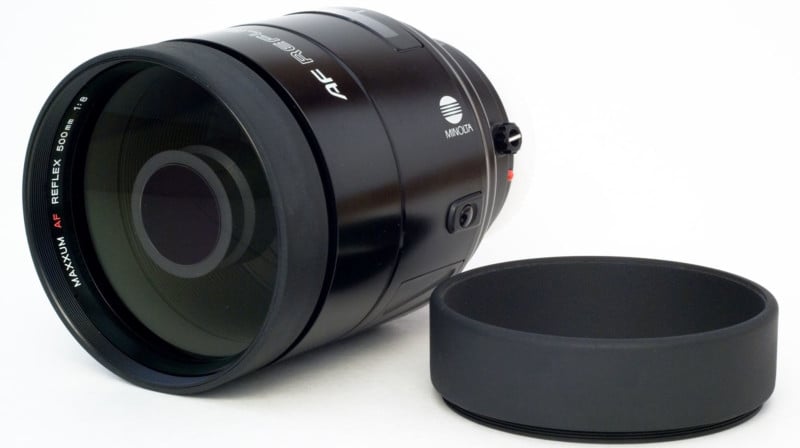Canon Designs 300mm f/2.3 and 400mm f/5 Autofocus Mirror Lenses
![]()
Canon has designed a pair of RF-mount catadioptric telephoto lenses that it says successfully corrects for field curvature while still being small, lightweight, and have a large aperture: a 300mm f/2.3 and a 400mm f/5.
The most impressive of these two designs is the 300mm f/2.3, as the design is just seven inches long according to patent documents filed by Canon in Japan and spotted by Digicame-Info. While the compactness is likely to be the biggest selling point, that only applies to the length of the lens since the design shows that the front element would have to be extremely large with a diameter that is more than half the length of the optic — that is, at least, what can be inferred from the design drawings.
![]()
The 400mm f/5 design is similar, but the front element is significantly smaller than the one shown as required for the 300mm f/2.3 optic.
![]()
In order to achieve the combination of telephoto length and compactness, Canon is using what is known as a catadioptric optical system, which contains both reflective and refractive elements. These systems are more colloquially known as mirror or reflex lenses, and Tokina has recently released several of these types of lenses for modern mirrorless cameras.
Mirror lenses are relatively common on telescopes but are typically less so for photography since the design results in an unusual bokeh pattern that many find distracting. Additionally, the aperture is fixed and cannot be adjusted.
Canon says that in order to produce a lens that sufficiently corrects for field curvature while also allowing the company to keep the lens small, light, and fast, a catadioptric design is the only way to go.
Unlike Tokina’s recent lens additions, Canon is adding autofocus to these lenses through a system that sits between the two reflecting elements in the middle of the lens. Most mirror lenses, and all of the mirror lenses that have recently come to market in the last couple of years, are manual focus only, which further limits their usability.

In fact, autofocus-enabled mirror lenses are relatively rare, though Minolta did design one that worked reasonably well in 1989, but ceased production of it in 2010.

Since these are just patent designs, there is no telling how long photographers will have to wait to actually see these lenses come to fruition — if Canon actually chooses to manufacture them at all. Canon previously patented five other mirror lens designs in 2021.